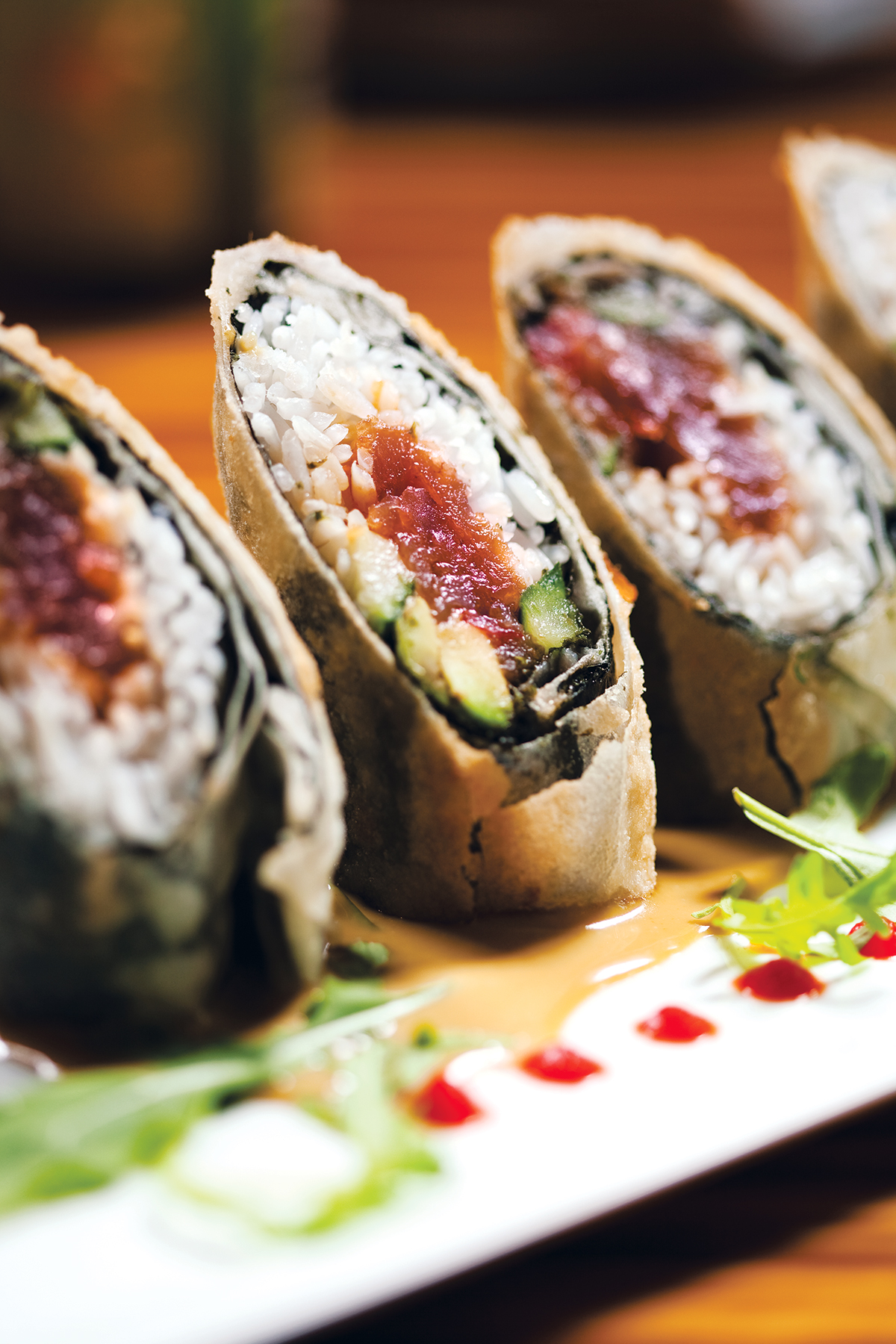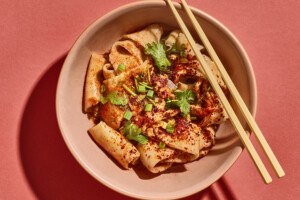Dining Out: Ginger Park

Photograph by Anthony Tieuli
I know that we Boston provincials are not supposed to be wowed when a chef who happens to have made her reputation in New York gets a job here. We have plenty of homegrown stars, after all. But I’ll admit I got excited when I heard Patricia Yeo was coming to town—and to the stylish South End restaurant Banq, too. (Yeo successfully lobbied for a name change when she came aboard.)
Yeo is a cook’s cook, not a household name but a trendsetter in the world of ambitious chefs. Born in Oregon, she attended boarding school in England and was pursuing a doctorate in biochemistry when she was seduced by cooking. Yeo worked for six years with chef Bobby Flay, whose southwestern chilies and cumin struck a powerful chord with the spices of her childhood.
She first came to foodies’ attention in 2000 when she opened Manhattan’s AZ, where—with expertise and confidence—she made a kind of fusion food no one else was making. AZ closed, though, and gaudy emporiums serving other takes on Thai and Singaporean street fare (such as Jean-Georges Vongerichten’s vast Spice Market in the Meatpacking District, and David Chang’s whole Momofuku empire) got all the attention and customers.
Now that she is in Boston, Yeo is injecting new life into the fusion formula, which has become rather tired lately. It was even getting tired at Banq, which started as a sort of Spice Market spinoff. Opened by the owners of the Indian restaurant Mantra, this spectacularly designed eatery in a former bank got lots of attention for its waves of light-colored pressed wood descending from the ceiling like Swinging Sixties stalagtites, but the food at Banq never made much of an impression.
Yeo told me she renamed the restaurant to both to give it her personal stamp and to flag the unifying theme in the cuisines she draws from. Indian food, for instance, often makes people think of cumin, she said, yet what she found during her travels to India was that ginger appeared in everything. Yeo keeps five kinds of ginger in the restaurant’s kitchen, she told me, mostly for the many Thai-influenced dishes she has created.
Yeo’s cross-cultural meat mixtures struck me as the most satisfying—something I didn’t expect, given the almost equal presence of seafood on the menu. Maybe it’s my western appetite, but I had to order doubles of two meaty dishes, the first one being naan with lamb curry, goat cheese, spinach, and potato ($10). When curry is done right, no one spice dominates, leaving only a slight, sweet tingle. The combination of that tingle and the floury bite of goat cheese and potato on top of a sturdy flatbread was irresistible. After the lamb, though, a chicken version with a sweeter spice mix ($10) was disappointingly bland.
The dan dan mien with Szechwan-style “Bolognese” sauce ($11) inspired plenty of competition at my table, as we fought over the thin Japanese egg noodles in a sauce that’s—dare I say it?—better than the usual Bolognese (and so good that we ordered two bowls at two separate dinners). Or at least it’s a different Bolognese: The usual pork and veal are mixed with fermented black beans, Chinese mustard, roasted chilies and sweet peppers, and enough darkly caramelized onions to make you think there’s a tomato-paste base. It’s a dense, oily sauce, and the beans help make it a thick coating reminiscent of the peanut butter and sesame paste I find addictive in traditional dan dan noodles.
Another dish I’d come back for is the wild boar in southwestern-influenced curry sauce ($12). Yeo told me she uses a sour, slightly fermented “jungle curry” with three types of chilies plus the lime juice, cilantro, and cumin she can’t help but use after her time with Flay. As with the Bolognese, caramelized onions provided a sweet, deep undertone: It read as a very good chili, the boar being a slightly sweet, meaty vehicle for the sauce. (If you’re afraid of boar, it’s nothing to worry about; if you want a better idea of how it actually tastes, go someplace else.)
Two more dishes, both duck, also proved worthy of revisiting. The duck meatballs with lemongrass and Thai curry paste ($12) were almost as satisfying as the duck meatballs she and plenty of other chefs have copied from Andrew Carmellini’s A Voce in New York. As with many of Yeo’s creations, the meatballs are gluten-free, bound with oatmeal rather than the usual bread soaked in milk; I missed that sponginess, but the flavor made up for it. And tea-smoked duck ($18), made with the breast, is Yeo’s approximation of Peking duck: She doesn’t have the necessary oven, so she spices and smokes it and serves the sliced breast with scallion pancakes that I found to be nearly as irresistible as the noodles.
Yes, there’s more to the menu, and, no, I didn’t find it to be as persuasive. A strange bitterness marred a main course of whole red cod ($19), dusted in rice flour and glazed with lime and Thai nam pla sauce (whose fermented anchovies might be the flavor culprit). The most familiar dishes, the ones closest to what we’re used to finding in Chinese restaurants—pot stickers ($8), siew mai ($8), spring rolls ($6), and tuna-vegetable rolls ($11)—are uninteresting compared with the meat. Nothing about them, except their lovely freshness (especially in the tuna rolls, which on my visit had julienned cucumber, green mango, and green papaya), hinted at anything distinctive in Yeo’s take or why she bothered with them. Fried rice featuring bits of duck confit and topped with a fried egg ($14) sounded great, but was practically flavorless and extremely oily.
The greatest disappointment of all? No dessert! The smart, pleasant waiters apologized profusely each time and offered consoling demitasses of melted Valrhona chocolate with cream. “I’m not a baker and I can’t afford a pastry chef,” Yeo told me. “I won’t make something that’s mediocre.” Go to Ginger Park, often, and maybe she’ll be able to afford one—though with all that good meat, chances are you won’t miss the sweets.
Ginger Park, 1375 Washington St., Boston, 617-451-0077, gingerparkboston.com


